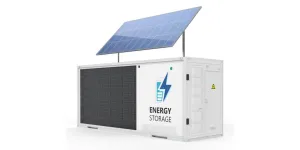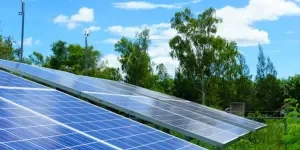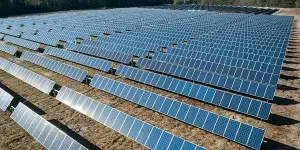Battery storage is steadily becoming pivotal in how we harness and utilize power. There’s a global pursuit for sustainable and eco-friendly energy. Innovative technologies are the driving force behind a greener future. According to the International Energy Agency (IEA), as of 2021, renewable energy accounted for about 29% of global electricity production.
Renewable energy sources offer sustainable power free from the harmful emissions of fossil fuels. Due to the intermittent nature of natural energy sources, the impact of battery storage is far-reaching. The battery storage industry boosts energy security and combats climate change while creating new opportunities for innovation.
Homeowners and businesses can now use excess energy generated during peak times and release it back into the grid when needed. In this guide, we’ll explore the role played by battery energy storage systems in meeting the demand for clean and renewable energy.
Table of Contents
The rise of battery storage
Why shifting to renewable battery storage is essential
How to choose a renewable battery storage system
Top 3 batteries to build your renewable energy storage system
Conclusion
The rise of battery storage
Grid-scale energy storage is set to help achieve Net Zero Emissions by 2050 Scenario notably. Renewables’ share of power generation is also set to rise from 29% to 35% by 2025.
The IEA also suggests that China will account for nearly half of the additional renewable generation, followed by the European Union with 15%.
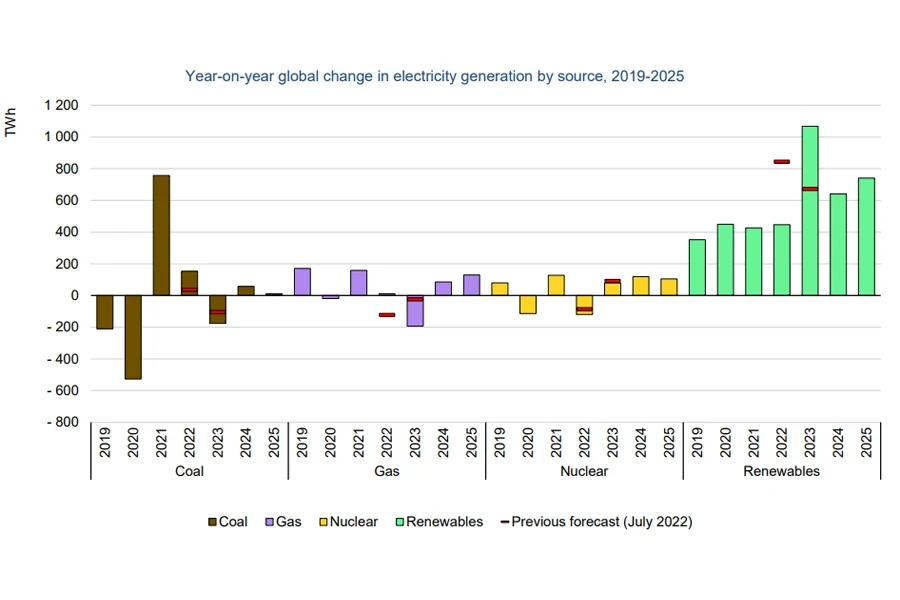
According to BloombergNEF’s report, there will be 110 GW/372 GWh of annual LDES (long-duration energy storage) installations by 2030. The cost of solar photovoltaic electricity has fallen by 85% since 2010.
The World Resources Institute suggests that government investment in research, renewable energy tax credits, and competitive auctions have improved renewable energy targets.
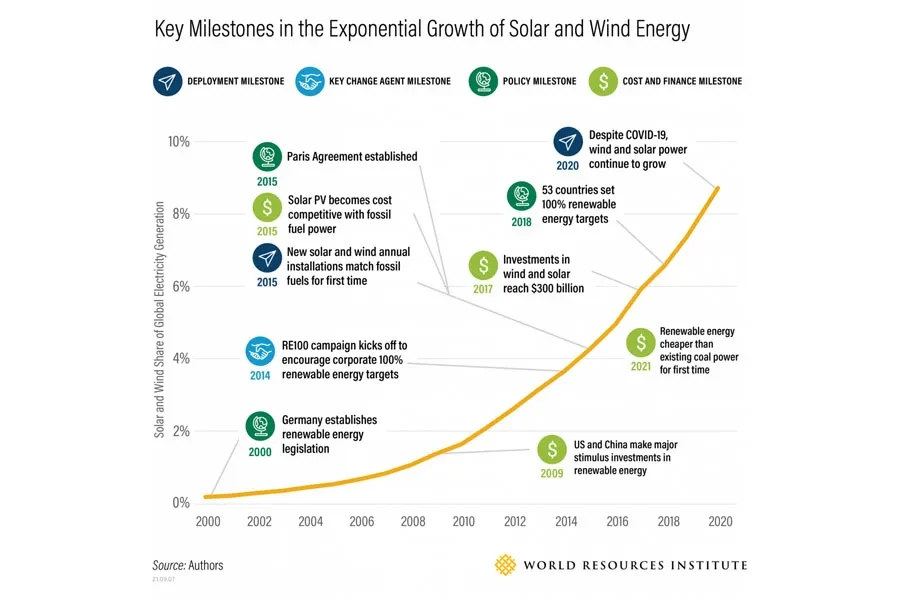
Economies of scale, ambitious supply chains, and the release of more renewable technologies have made solar energy storage systems cheaper.
Why shifting to renewable battery storage is essential
Factors such as grid stability, decarbonization, and increased renewable energy utilization make investing in solar energy battery storage crucial.
1. Enhanced grid resilience
Because fluctuations in wind and sunshine can destabilize the grid, blackouts may occur. Solar batteries act as buffers for storing surplus energy and releasing it during periods of high demand.
The National Renewable Energy Laboratory (NREL) found that integrating renewable energy with battery storage could reduce the frequency and duration of blackouts by 90%.
Regions with a higher share of renewable battery storage experience better energy resilience, significantly reducing power outages, as the U.S. Department of Energy reported.
2. Peak power shaving
Peak power shaving simply reduces electricity demand during periods of highest consumption, often in the mornings and evenings. As a result, this helps prevent your grid from straining.
Using renewable energy battery storage, peak shaving lowers overall costs by reducing reliance on expensive grid electricity. According to a study by the Rocky Mountain Institute, businesses in Africa that use on-site solar and storage could save up to 25% on energy costs.
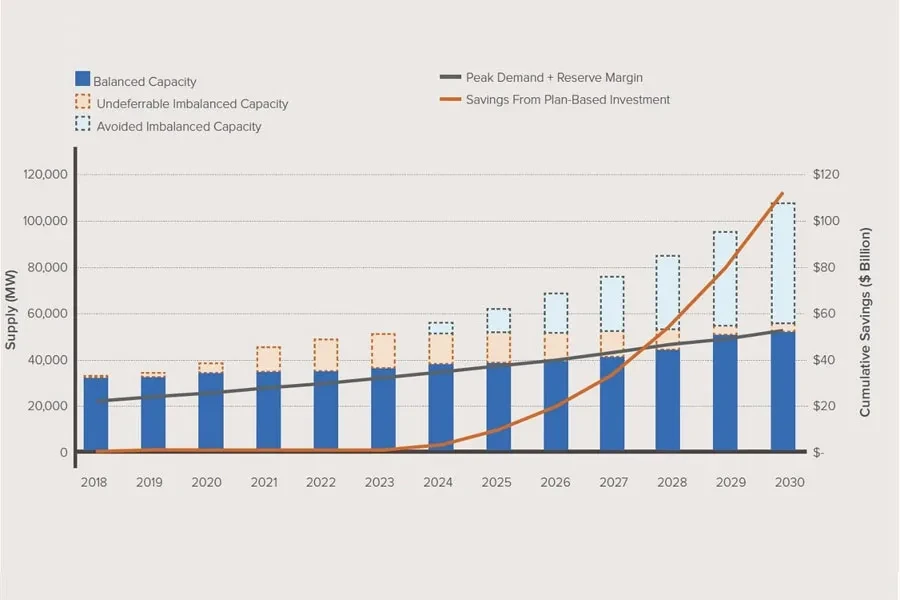
Peak power shaving balances supply and demand, considering the intermittent nature of renewable energy sources. Without battery storage, energy generated during peak production times will likely go to waste.
3. Reduced carbon footprint
Traditional power grids heavily rely on fossil fuel-powered plants, which are expensive and significant pollutants.
The International Energy Agency (IEA) emphasizes that renewable battery storage solutions significantly reduce carbon emissions. Cleaner and more sustainable energy sources are integrated using battery storage to achieve this.
Transitioning to renewable battery storage can reduce the global carbon footprint by six gigatons by 2040. Since renewable energy battery storage technologies continue to advance, this contributes to a reduction in carbon emissions.
4. Improved renewable integration
Solar battery storage helps resolve grid instability and supply-demand imbalances.
The National Renewable Energy Laboratory (NREL) found that integrating renewables with 4 hours of battery storage could meet electricity demand 99.9% of the time.
Integrating battery storage with renewable energy increases utilization by 30%, promoting energy independence and resilience.
How to choose a renewable battery storage system
Solar energy storage options vary in pricing, features, capacity, efficiency, and more. Here are some key features worth considering when investing in a renewable battery storage system:
1. Lifecycle costs and return on investment (ROI)
Your renewable battery storage system is an investment, not just an expense. Lithium-ion batteries tend to have a longer lifespan of 10‒15 years. Lead-acid batteries, on the other hand, last between 5 and 8 years.
While lithium-ion batteries have higher upfront costs, their lower maintenance makes them more cost-effective.
Besides the overall lifespan of renewable energy battery storage, the discharge range should also be optimal. Installation, operational, and maintenance expenses also contribute to the lifestyle costs.
2. Performance monitoring
Real-time tracking allows homeowners to track storage, consumption, and energy production. The best renewable energy battery system should also have a feature for optimizing system performance.
Built-in monitoring tools check the battery’s health and catch any issues that could damage the system’s efficiency.
3. Regulatory compliance
Renewable battery storage systems are also subject to regulatory scrutiny. For reliability and safety, check for compliance with local and national regulations, industry standards, and certifications.
4. Assess your energy needs
Before investing in renewable battery storage, check your energy consumption patterns. Make sure to evaluate the current energy consumption while identifying peak usage times. Most of all, consider projecting future energy needs. These factors will help determine the system capacity you need.
5. System capacity and sizing
Consider a battery size that can store enough energy to cover your needs during peak demand periods. For instance, if your household requires 10 kWh of energy per day and experiences about 5 hours of sunlight, a 50 kWh storage system would suffice.
6. Explore different battery technologies
Different battery technologies offer varying perks and downsides. Lithium-ion batteries, for example, are best for electric vehicles and home storage due to their high energy density and longer cycle life.
Lead-acid batteries, on the other hand, are known for their lower cost but utilize older technology.
Top 3 batteries to build your renewable energy storage system
1. Shenzhen Avepower lithium-ion energy storage battery for home solar energy system
The Shenzhen Avepower lithium-ion battery allows for modular expansion of storage capacity. It packs lithium iron phosphate (LiFePO4) batteries, known for their high energy density, safety, and long cycle life.
You also get a flexible power output range of 10‒20 kWh, making the system suitable for residential and commercial applications. It holds several certifications and can connect to off-grid and hybrid-grid systems for added flexibility.
AVE Power is one of the fastest-growing and leading enterprises in the new solar energy industry. They mainly develop solar energy storage, electric vehicles, and power battery systems, aiming to bring a bright and green future to the world. Avepower is expanding its market share worldwide, mainly in Asia, Africa, Europe, America, and Oceania.
2. Shenzhen Ace Enercube-1290 battery storage system
The EnerCube-1290 also uses LFP batteries for thermal stability and long cycle life. Its substantial capacity of 1290 kWh makes it a high-capacity storage system.
You can pick from various AC output parameters depending on your power needs. This versatility makes the model suitable for emergency power backup and peak-load shifting.
The battery storage system is an international standard-sized container, facilitating easy transportation. Other notable features include energy management software, real-time operation logs, 24-hour cloud intelligent maintenance, and more.
3. Guangdong Didu DDBGSG51100 48V lithium-ion battery pack
Deep cycle battery: The DIPOWER lithium iron phosphate (LiFePO4) battery can be recycled up to 6,000 times. LiFePO4 cells are used for their better stability, higher energy density, and lower weight, making them suitable for high temperatures, high power, and low self-discharge.
Automatic and maintenance-free BMS: Built-in BMS protects your battery against overcharging, over-discharge, overcurrent, and short circuits, as well as low and high temperatures, to improve performance and lifespan. It will automatically turn off when the voltage drops below 1V.
Compact design with 5 KWh capacity: DIPOWER’s 51.2V and 100Ah LiFePO4 battery weighs only 49 kg, giving it both large capacity and compactness.
Widely used: LiFePO4 batteries are environmentally friendly, as they do not contain heavy metals or rare metals. They are the best choice for many applications, such as fish finders, ice fishing, camping, solar systems, home alarm systems, and home backup systems.
Conclusion
The transition to renewable battery storage is our approach to energy consumption. Integrating battery storage with renewable energy sources addresses carbon emissions, grid stability, and peak power demands.
Choosing the right renewable battery storage system depends on performance monitoring, lifecycle costs, regulatory compliance, and more. All these are crucial for maximizing the benefits of sustainable and eco-friendly energy solutions.
